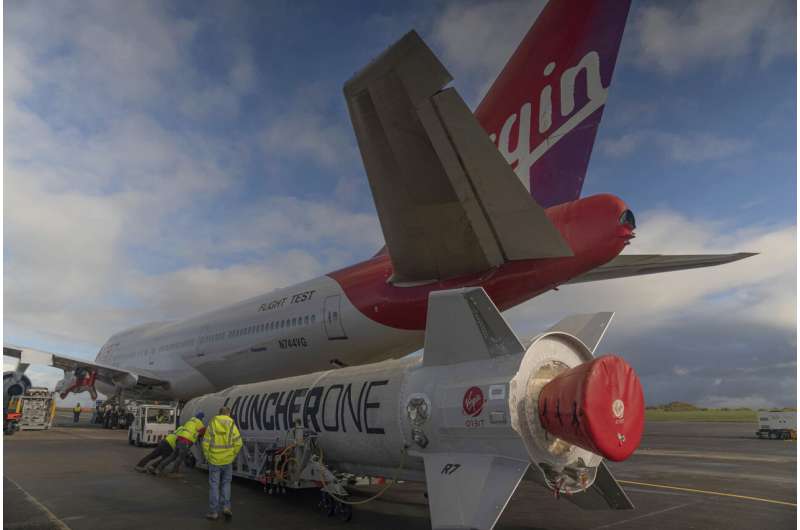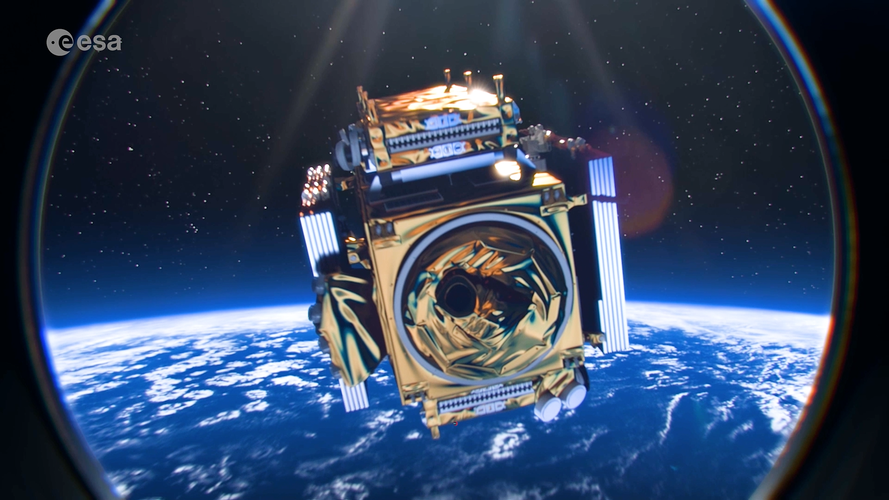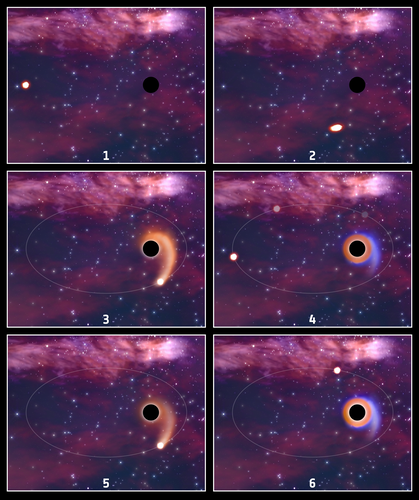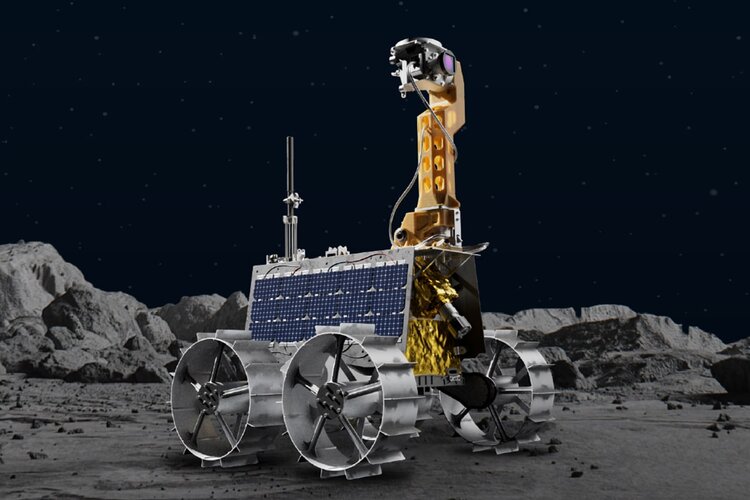
Copernical Team
Update on "Start Me Up" mission anomaly
 Preliminary analysis of data from the Start Me Up mission has begun to shed light on the outcome of the January 9th flight and next steps to follow.
The Start Me Up mission was the first orbital launch attempt in history conducted from western Europe. The flight was conducted by Virgin Orbit's air-launched LauncherOne system from the newly commissioned Spaceport Cornwall in the UK, which j
Preliminary analysis of data from the Start Me Up mission has begun to shed light on the outcome of the January 9th flight and next steps to follow.
The Start Me Up mission was the first orbital launch attempt in history conducted from western Europe. The flight was conducted by Virgin Orbit's air-launched LauncherOne system from the newly commissioned Spaceport Cornwall in the UK, which j Ongoing ISS Operations, Soyuz Status Update
 NASA and Roscosmos are adjusting the International Space Station flight plan after completing an investigation into a coolant leak on the Soyuz MS-22 spacecraft docked to the station.
NASA hosted a joint media briefing Wednesday about the Roscosmos-led investigation to update the public on the Soyuz status and the forward strategy.
As a part of the work, Roscosmos engineers determine
NASA and Roscosmos are adjusting the International Space Station flight plan after completing an investigation into a coolant leak on the Soyuz MS-22 spacecraft docked to the station.
NASA hosted a joint media briefing Wednesday about the Roscosmos-led investigation to update the public on the Soyuz status and the forward strategy.
As a part of the work, Roscosmos engineers determine Lunar Flashlight team assessing spacecraft's propulsion system
 NASA's Lunar Flashlight mission successfully launched on Dec. 11, 2022, to begin its four-month journey to the Moon, where the small satellite, or SmallSat, will test several new technologies with a goal of looking for hidden surface ice at the lunar South Pole. While the SmallSat is largely healthy and communicating with NASA's Deep Space Network, the mission operations team has discovered that
NASA's Lunar Flashlight mission successfully launched on Dec. 11, 2022, to begin its four-month journey to the Moon, where the small satellite, or SmallSat, will test several new technologies with a goal of looking for hidden surface ice at the lunar South Pole. While the SmallSat is largely healthy and communicating with NASA's Deep Space Network, the mission operations team has discovered that Virgin Orbit: Premature shutdown behind rocket launch fail

ESA Preview 2023
 Video:
00:06:33
Video:
00:06:33
At the start of 2023 the European Space Agency ESA is happily looking forward to another year filled with a host of thrilling new missions, cutting edge science and the continued effort to guarantee independent access to space for Europe. We will see the first images of the first Meteosat Third Generation satellite, the launch of the Jupiter Icy Moons Explorer, and of Euclid and another Sentinel-1 satellite launch. It will also be the year of Ariane 6 which will make its inaugural flight and the first Dane in space, Andreas Mogensen will return to the ISS
XMM-Newton spies black holes eating the same stars again and again

Two teams of astronomers using ESA’s XMM-Newton space telescope have observed repeated outbursts of light from inactive black holes that partially destroy stars again and again. This discovery is unexpected, since outbursts of black holes usually appear only once when a black hole consumes a star.
Snowless ski slopes from space
 Image:
Europe has kicked off the new year with an intense winter heatwave. The warm temperatures and lack of snowfall in the Alps has left several ski resorts with little or no snow. The difference in snow cover is visible in these Copernicus Sentinel-2 images captured in January 2022
Image:
Europe has kicked off the new year with an intense winter heatwave. The warm temperatures and lack of snowfall in the Alps has left several ski resorts with little or no snow. The difference in snow cover is visible in these Copernicus Sentinel-2 images captured in January 2022 ESA to touch Moon from wheels of UAE Rashid rover

The very first European technology to make contact with the surface of the Moon will be on the wheels of the Rashid rover, part of the Emirates Lunar Mission currently on the way to our natural satellite. The outer rims of this rover’s four wheels incorporate small sample panels to test how differing materials cope with the abrasive lunar surface, including a quartet of samples contributed by ESA.
SES secures 300M Euro in financing from European Investment Bank
 The European Investment Bank (EIB), the financing institution of the European Union, and leading global content connectivity solutions provider SES announced details of their euro 300 million financing agreement at a press briefing at the SES headquarters in Betzdorf, Luxembourg.
The seven-year term loan will back investments related to the design, procurement and launch of three previousl
The European Investment Bank (EIB), the financing institution of the European Union, and leading global content connectivity solutions provider SES announced details of their euro 300 million financing agreement at a press briefing at the SES headquarters in Betzdorf, Luxembourg.
The seven-year term loan will back investments related to the design, procurement and launch of three previousl Unibap receives order from Thales Alenia Space
 Unibap AB (publ) has received an order from Thales Alenia Space to provide SpaceCloud solution for technology development targeting use on future satellite missions. The order value is KEUR 182.
Thales Alenia Space in Italy has placed a contract with Unibap to use SpaceCloud infrastructure to develop a next generation on-orbit processing solution for future satellite missions. Thales Aleni
Unibap AB (publ) has received an order from Thales Alenia Space to provide SpaceCloud solution for technology development targeting use on future satellite missions. The order value is KEUR 182.
Thales Alenia Space in Italy has placed a contract with Unibap to use SpaceCloud infrastructure to develop a next generation on-orbit processing solution for future satellite missions. Thales Aleni 
